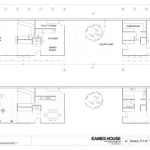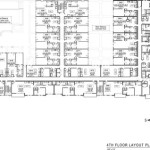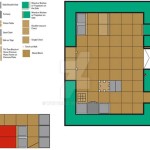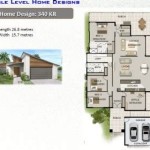Unveiling the Plantation Clubhouse: A Hub for Community and Recreation
The term "Plantation Clubhouse" typically evokes images of refined leisure and community engagement, acting as a central point for social and recreational activities within a planned residential development. These clubhouses serve a vital role in fostering a sense of belonging, providing amenities that enhance the quality of life for residents. Their design, functionality, and management are crucial factors in determining their success and the overall satisfaction of the community they serve.
Functioning as community hubs, Plantation Clubhouses often host a wide array of events and activities catering to diverse interests and age groups. These can range from fitness classes and swimming lessons to book clubs, holiday celebrations, and organized games. The clubhouse provides a physical space where residents can connect with one another, building relationships and strengthening the social fabric of the community. Its value extends beyond simply providing recreational facilities; it's about creating a shared experience and a sense of shared identity.
The success of a Plantation Clubhouse relies heavily on effective management and a clear understanding of the needs and desires of the community it serves. Regular surveys, community meetings, and open communication channels are essential for ensuring that the clubhouse remains relevant and responsive to the evolving needs of its residents. A well-managed clubhouse not only provides a valuable amenity but also contributes to the overall property values of the community.
Key Point 1: Design and Amenities of a Plantation Clubhouse
The architectural design of a Plantation Clubhouse plays a significant role in creating the desired atmosphere and functionality. The design often reflects the overall aesthetic of the community, incorporating elements that resonate with the local environment and architectural style. A well-designed clubhouse will seamlessly blend with its surroundings, providing an inviting and aesthetically pleasing space for residents to enjoy.
The specific amenities offered within a Plantation Clubhouse vary depending on the size of the community, the demographics of its residents, and the available budget. However, certain amenities are commonly found in many clubhouses, contributing to their appeal as comprehensive recreational and social centers. These might include:
Swimming Pool:
Often a central feature, the pool area can include separate sections for adults and children, as well as features like lap lanes, hot tubs, and water slides.Fitness Center:
Equipped with a range of cardiovascular and strength training equipment, the fitness center allows residents to maintain their physical well-being without having to travel to an external gym.Meeting and Event Spaces:
Versatile spaces that can be used for a variety of purposes, from community meetings and board gatherings to private parties and celebrations.Game Room:
Offering opportunities for casual recreation, game rooms often feature amenities such as pool tables, ping pong tables, card tables, and video game consoles.Library or Reading Room:
A quiet space for residents to relax and enjoy books, newspapers, and magazines.Kids' Play Area:
A designated area for children to play and socialize, often featuring age-appropriate equipment and activities.Kitchen and Dining Facilities:
Providing the ability to host events and prepare meals, a well-equipped kitchen and dining area can be a valuable asset for the clubhouse.Outdoor Spaces:
Patios, decks, and landscaped gardens provide opportunities for residents to enjoy the outdoors, relax, and socialize.Tennis and Pickleball Courts:
These courts offer residents opportunities for athletic recreation and social interaction.
The selection of amenities should be carefully considered based on the needs and preferences of the community. Regular surveys and feedback sessions can help ensure that the clubhouse offers a range of amenities that are both popular and well-utilized.
Key Point 2: The Role of the Clubhouse in Community Building
The Plantation Clubhouse serves as a vital catalyst for community building, providing a focal point for social interaction and shared experiences. It acts as a neutral ground where residents can connect with one another, fostering a sense of belonging and strengthening the social bonds within the community. Regularly scheduled events and activities play a crucial role in bringing residents together and creating opportunities for interaction.
The clubhouse provides a space for residents to pursue their hobbies and interests, whether it's participating in a book club, joining a fitness class, or attending a social gathering. These shared activities create a sense of camaraderie and help residents to form lasting friendships. The clubhouse also serves as a venue for celebrating holidays and special occasions, bringing the community together in a spirit of unity and shared joy.
Furthermore, the clubhouse can play a significant role in promoting community involvement and volunteerism. It can serve as a meeting place for community organizations and committees, providing a platform for residents to voice their opinions and contribute to the betterment of the community. The clubhouse can also be used to host fundraising events and charitable activities, allowing residents to give back to the wider community and make a positive impact on the lives of others.
The involvement of residents in the planning and management of the clubhouse is crucial for ensuring its success as a community building hub. Resident committees can be formed to provide input on programming, event planning, and facility improvements. This collaborative approach fosters a sense of ownership and encourages residents to actively participate in the life of the community.
Key Point 3: Management and Maintenance of a Plantation Clubhouse
Effective management and meticulous maintenance are critical for the long-term success and sustainability of a Plantation Clubhouse. A well-managed clubhouse will be clean, safe, and well-maintained, providing a welcoming and enjoyable experience for residents. The management team is responsible for overseeing all aspects of the clubhouse operations, including scheduling events, managing staff, maintaining the facilities, and ensuring compliance with all applicable regulations.
A clearly defined set of rules and regulations is essential for ensuring the smooth and orderly operation of the clubhouse. These rules should be communicated to all residents and consistently enforced. The rules should address issues such as usage guidelines, guest policies, reservation procedures, and noise restrictions. Transparent and consistent enforcement of the rules helps to create a fair and equitable environment for all residents.
Regular maintenance is crucial for preserving the value and functionality of the clubhouse. This includes routine cleaning, landscaping, equipment repairs, and preventative maintenance. A proactive maintenance program can help to identify and address potential problems before they escalate into major issues, minimizing downtime and extending the lifespan of the facilities. Regular inspections should be conducted to identify any safety hazards and ensure compliance with building codes and regulations.
Budgeting and financial management are also critical aspects of clubhouse management. The management team is responsible for developing and adhering to a budget that covers all operating expenses, including staffing, maintenance, utilities, and insurance. Prudent financial management ensures that the clubhouse has the resources necessary to provide a high-quality experience for residents while also ensuring the long-term financial stability of the community.
Technology can play a significant role in streamlining clubhouse management and enhancing the resident experience. Online reservation systems, digital communication platforms, and automated access control systems can improve efficiency, reduce costs, and provide residents with convenient access to information and services. Embracing technology can help to modernize the clubhouse and make it more appealing to a younger generation of residents.
Furthermore, regular evaluation and feedback are essential for ensuring that the clubhouse continues to meet the needs of the community. Resident surveys, suggestion boxes, and community meetings can provide valuable insights into resident satisfaction and identify areas for improvement. A commitment to continuous improvement ensures that the clubhouse remains a valuable asset for the community for years to come.
In conclusion, a Plantation Clubhouse serves as more than just a building; it is a central pillar of the community, fostering social connections, providing recreational opportunities, and enhancing the overall quality of life for residents. Successful management, thoughtful design, and a focus on community needs are essential for ensuring that the clubhouse fulfills its potential as a vibrant and thriving hub for social interaction and recreation.

Plantation Lakes Clubhouse Tono Group

New Club De Bonmont Clubhouse Adds To Plantation Bay S Area Best Amenities Golf Country

Golf Clubhouse Experiences Hilton Head Island

Plantation Clubhouse Lema Construction

Clubhouse Al Chestnut Hill Plantation

Plantation Clubhouse Lema Construction

Clubhouse Silverwood Plantation

Plantation Course Clubhouse Sah Archipedia

Pecan Plantation Country Club

Plantation Clubhouse Lema Construction








